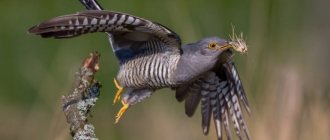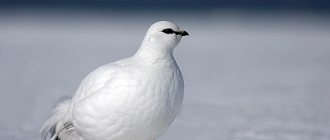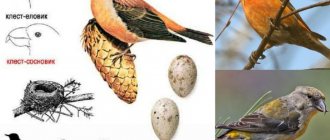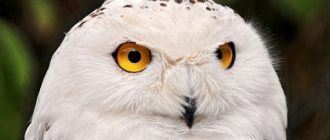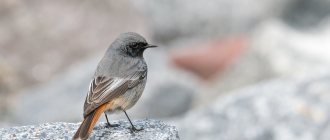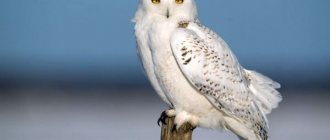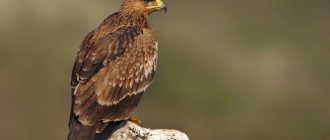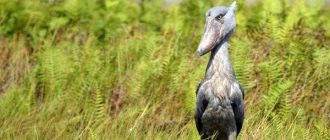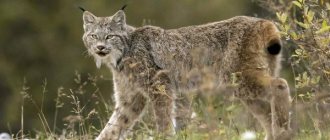Conservation status
The great egret is included in the International Red List of Species of Least Concern. In the 19th and early 20th centuries, the world population of great egrets declined by almost 95%, but then recovered almost everywhere. For example, the Astrakhan Nature Reserve was created in Russia in 1919, mainly to protect the great egret. Now the total number of great egrets in Europe is estimated at 11–24 thousand pairs, of which 5–7 thousand pairs are in the European part of Russia.
Features of keeping in captivity
Great egrets easily adapt to a wide variety of habitats. They are unpretentious in food, undemanding to the environment. The main thing is that they have free access to any body of water and a large amount of animal food rich in protein. They are often kept in zoos. They easily adapt to captivity conditions, practically do not get sick, and their life expectancy does not change significantly.
The main features of keeping a great egret in captivity:
- Birds kept in captivity must eat properly. It is necessary to provide food with a balanced diet, including various vitamin and mineral supplements,
- It is preferable to keep birds in small groups, since in natural conditions they rarely live alone,
- While incubating the chicks, the female must be given complete rest.
- When the chicks appear, it is necessary to ensure that they do not destroy each other in fights for food.
- Thanks to its beauty, grace, and elegant white plumage, the great white heron can be found in almost any zoo. As a rule, birds are kept in small enclosures with free access to an artificial pond. Fish similar to what birds feed on in natural conditions are released into the pond. Feeding is carried out several times a day, at the same time, according to the established diet. In addition, she obtains her own food by hunting on the shore of a reservoir. When the mating season arrives, the birds need to be provided with materials to build a nest, and they also need to ensure a comfortable temperature sufficient for the successful hatching of the chicks. If all these conditions are met, the herons will have a long life expectancy, and they will feel as comfortable as in natural conditions.
The great egret is a truly unique bird. It is distinguished by its unusually beautiful plumage, unique grace, and interesting behavior. This beauty plays the role of a river or swamp “orderly”, reducing the excessive number of harmful insects and reptiles. Currently, the population of these birds has decreased significantly due to the massive drainage of swamps and the drying out of natural reservoirs. In this regard, these unique creatures need protection and conservation. Seeing a great white heron in natural conditions is a rare success.
Species and man
In the 19th century, the population of the great white heron was undermined to a large extent due to hunting of this beautiful bird. Special feathers on the back that appear during the mating season - aigrette - were used to decorate ladies' hats. For this reason, herons were destroyed in huge numbers, and on the territory of both hemispheres. So, in 1898 alone, more than 1.5 million herons were killed in Venezuela for the sake of aigrette. From one bird you can get only 30–50 aigrettes, but to get 1 kg of these feathers, you had to kill 150 birds. To save endangered birds, and great egrets in the first place, the famous Royal Society for the Protection of Birds (Great Britain) was created, which is now the largest environmental organization in Europe. Currently, great egrets are not hunted anywhere. Thus, direct anthropogenic impact is excluded, but indirect impact has become more significant - loss of habitat and its pollution with heavy metals and pesticides. These substances negatively affect the health and fertility of birds (high levels are noted both in the tissues of adult birds and in eggs).
What are the natural enemies of great egrets?
It is believed that adults have no enemies, but young offspring and eggs are attacked by raccoons, crows and vultures.
White herons are ringed by ornithologists. This way they learn new things about these birds and track population numbers.
Appearance
The great egret is a large bird with a height of about 1 m and a wingspan of 130–140 cm; The weight of adult birds is about 1 kg. As a rule, males are larger than females; There are no other signs of sexual dimorphism. The plumage is completely white. During the mating season, long openwork feathers grow on the back - aigrette, which the birds actively display. The beak is long, straight, yellow. The legs and toes are long and dark gray. The neck is long, s-shaped. The sixth cervical vertebra has a special structure, thanks to which the heron can quickly extend its neck and retract it back.
Breeding offspring
During the mating season, males court females using special rituals.
When a pair has formed, nest construction begins immediately. A female great egret lays 2 to 6 eggs in one season. The incubation period for these birds lasts about 25 days. The clutch is carefully protected by both parents.
Surprisingly, the eggs of the great egret have an amazing azure hue.
Little egret cubs are born completely without feathers, blind and helpless. After 16 days, the babies stand on their feet, and after a month and a half, they are fully feathered. When the chicks are 7 weeks old, they try to fly out of the nest. From this moment, independent life begins, although parents look after their children for about a month.
Both parents take part in hatching the offspring.
These birds reach sexual maturity at two years old, and they live for about 15 years.
Lifestyle and social behavior
Living in temperate latitudes, great egrets are migratory and winter in Africa and tropical Asia. Most southern heron populations are sedentary or have small migrations. Great white herons walk slowly and majestically on the ground, looking for prey. Their vision is binocular. The flight is smooth, its speed is 30–50 km/h. When flying, it moves its head back, bending its neck in an s-shape. They hunt alone or in small groups during the day or at dusk, and at nightfall they seek shelter, forming large flocks, often with other species of herons. They behave quite aggressively, often getting into fights for prey with other birds, including those of their own species. After the end of the nesting season, young herons fly away from their native nest, sometimes at a distance of up to 400 km.
Natural habitat
The great egret inhabits saltwater and freshwater marshes, marshy ponds and tidal flats, and is found in tropical and temperate regions of the Americas, Europe, Africa, Asia and Australia. It is a partially migratory species. Birds that breed in the northern hemisphere migrate south before the onset of winter.
Nutrition and feeding behavior
The great white egret is a true predator. Its diet includes fish, frogs and their tadpoles, small rodents, birds and their chicks, crustaceans, and various insects. Herons are not picky when choosing food, but the main food is still fish. During the breeding season, they prefer to look for food near the nest, but can fly up to 20 km. The feeding activity of herons is purely diurnal. Adult birds begin to fly for food at dawn, and the greatest activity occurs from 3 to 8–9 am, and then weakens during the day. The second peak of activity, smaller than the morning one, is observed from 15–16 hours to 19–20 hours. Great white herons strictly guard their feeding area and often get into fights with birds of other species. However, if there is a lot of food, they can hunt in small flocks. When hunting, the great egret often stands motionless on one leg, looking for prey in the water. If the water is high, the bird stands on the shore with its head tilted towards the water. Having discovered prey, the heron makes a swift lunge with its neck and snatches the victim with its sharp beak. Sometimes birds wander slowly (or quickly) through shallow water, but many ornithologists believe that by standing in one place, a heron can catch much more food. It swallows caught prey whole.
WHAT DOES IT EAT?
The great white egret usually walks in shallow water along the coastal reeds in search of food. Sometimes herons find food in the fields. They roam in search of food in mangroves and wetlands of forests. Having noticed the prey, the bird immediately straightens and stretches its neck, unerringly aiming with its sharp beak. The great heron often waits for prey, standing motionless in the water. Far from the shore, it slowly flies from place to place, peering into the water, and attacks the victim from above. The composition of the diet of a heron of this species depends on the time of year. It is based on carp, perch, tench, rudd, as well as invertebrates living in the water. In summer, the heron feeds on large insect larvae, hunts snails, crustaceans, and eats the chicks of other birds. The great white heron lives separately, protecting its territory from competitors - representatives of its own species, but in places where there is food, they feed in flocks.
Reproduction, rearing of offspring and parental behavior
The great egret is monogamous, but pairs are formed, as a rule, for one season, although some pairs are known to reunite the following year. It nests in large colonies together with other heron species, often smaller ones. In temperate latitudes, nesting occurs in the warm season (spring and summer), in the tropics - all year round. The courtship ritual of these herons, during which even the appearance of the birds changes, is quite complex. During the breeding season, birds of both sexes change the color of their beaks and non-feathered parts on the head, and the famous aigrette grows strongly. Usually the males are the first to arrive in the colony and choose places for future nests. Priority here belongs to older males; they choose the best places closer to the center of the colony. Having chosen a place and secured it for himself, the male begins a ritual dance, attracting the female. Females sit on neighboring trees and carefully watch what is happening. Sometimes they do a reciprocal dance, sometimes even small fights occur between them. Herons choose partners very pickily, and sometimes one bird can drive away another, for some reason it doesn’t like it. The heron begins to build a nest as soon as a pair has formed. Nests are placed on tall trees (not lower than 10 m) growing near water; less often - on bushes (in the absence of suitable trees). The nest is a rather untidy pile of branches of different sizes, piled in one place. The male usually collects material for the nest, often simply stealing it from neighbors, and the female lays it down. The diameter of the nest is 60–80 cm, its height is 50–60 cm. Sometimes the nest can be used the next year, unless the herons change the location of the entire colony. Despite colonial nesting, the male very actively defends his site and nest, screams loudly and attacks an intruder. The female lays 3–6 bluish-green eggs at intervals of 2–3 days. There is usually one clutch per year, but if it dies in the early stages of incubation, a second clutch may be delayed. Both parents incubate, the incubation period lasts 23–26 days. The chicks hatch almost naked and helpless in the same order as the eggs were laid. A fierce fight immediately begins between them over food, in which the older and stronger ones win. Most often, the younger ones die, and often only 2 older chicks (and sometimes even 1) survive in the brood. In the first days, the parents feed the chicks with regurgitated food, and then bring the whole prey. Chicks in a nest behave aggressively not only towards each other. Ornithologists who have happened to ring great white heron chicks say that the chicks desperately resist and try to hit a person with their beak, aiming at the eyes. The chicks fledge after 42–49 days, begin to fly well after 7 weeks, but for another 3–4 weeks they depend on their parents, after which the brood disintegrates. The mortality rate of young great egrets in the first year of life is very high and amounts to over 75%. Great white herons become sexually mature at the age of 2 years.
LiveInternetLiveInternet
Great egret (Ardea alba).
The sizes of herons vary widely: the smallest species reach a height of 40-60 cm, the largest giant heron reaches a height of 1.4 m, the average weight of these birds is 1-2.5 kg. The appearance of herons is very recognizable; they are characterized by a long straight beak, a long neck, a short, sharp tail and long thin legs with prehensile fingers. In a calm environment, herons keep their necks half-folded; when hunting, they stretch them out, but the bend of their neck is ugly, as if broken. In this position, birds often resemble a dry branch. Despite their affinity for water, herons do not have a coccygeal gland, with the fat of which waterfowl usually lubricate their plumage. Instead, they have special areas of skin with loose, brittle fluff on their chest and back—powder patches. Herons cover their plumage with powdery feather crumbs produced by powderers. Due to this feature, the plumage of herons is not protected from getting wet, so they do not swim or dive. The plumage of herons is smooth, close-fitting, and there is often a small crest on the head. The color of these birds is often monochromatic - gray, white, black, red, less often bicolor (for example, the magpie heron is black and white), the beak is usually yellow, less often black, the paws are dark. Sexual dimorphism is weakly expressed, males are slightly larger than females; during the mating season, some species of herons acquire feather decorations, but even in this case, males and females are almost indistinguishable from each other.
American White Heron (Egretta thula) in mating season.
Herons are very widespread throughout the world; they are found on all continents and on some oceanic islands (Galapagos, for example). They are only absent in Antarctica and the polar regions of the Northern Hemisphere. The range of different species differs in size, for example, the great egret is found on almost all continents, and the Madagascar egret lives only on Madagascar and nearby islands. Everywhere, herons are attached in one way or another to bodies of water; they inhabit swamps, mangroves, floodplains and river deltas, lakes, wet meadows and reed thickets. On the banks of large bodies of water with extensive open areas, herons are rarely found. Most species are colonial and live in groups of 15-100 individuals, but these formations are unstable. Firstly, herons do not form dense flocks; rather, they stay at a close distance from each other. Secondly, large colonies exist only in places rich in food; on the banks of small rivers, herons disperse and nest at a distance. Finally, a number of species are always found only singly (giant heron).
Giant heron (Ardea goliath).
Populations in tropical regions are sedentary, while populations from the temperate zone migrate seasonally. As a rule, herons from Europe and the northern regions of Asia fly to South Asia, Southern Europe and Africa for the winter. Herons from North America fly to South and Central America for the winter. Birds fly away in September-October and arrive in March-May. Herons take off from the ground easily and quickly, but their flight is heavy and slow; they fly at high speed only to escape from enemies. Thus, their speed reaches 24-50 km/h. During migration, herons never form a wedge; in general, their migrations are not noticeable.
In flight, herons keep their necks folded and this distinguishes them from other long-necked birds.
Herons feed on a variety of aquatic and near-aquatic life - fish, fry, tadpoles, adult frogs and toads, newts, snakes, snakes, lizards, mollusks, crustaceans, insects. On occasion, they can also hunt warm-blooded animals: they catch chicks of seagulls, mouse-like rodents and even moles. These birds practice ambush hunting, and do this in several ways. Sometimes a heron slowly walks through shallow water, freezing in one place for a long time and looking closely. Seeing the prey, she grabs it with a swift movement.
A gray heron (Ardea cinerea) carries a caught frog in its beak.
Sometimes the heron stands still, completely motionless, but she not only waits, but also lures prey. To do this, she moves her fingers, which are often colored in a contrasting color with her paws. The fish take their fingers for worms and swim closer.
The yellow-orange toes of the white heron contrast in color with the dark legs, which attracts fish.
Egyptian herons generally rarely hunt in water; they prefer to accompany herds of herbivores and catch insects scared by them. You can often see these birds sitting on the backs of buffalos, rhinoceroses, and elephants. The most unusual method of hunting is used by the black heron. She also walks in shallow water, but always does this with half-opened wings. The shadow of the wings attracts fish, who seek refuge in it from the heat and dangers.
Black Heron (Egretta ardesiaca) in search of prey.
At the climax of the hunt, the heron with a sharp movement closes its wings like a tent, while hiding its head under them. This allows her to see the fish better while avoiding the glare of the water. The heron always swallows the caught prey whole; if it is large, the bird throws it into the air and catches it, directing it along its beak.
Hunting by a black heron is reminiscent of a game of hide and seek.
These birds breed once a year. In species of the temperate zone, the breeding season begins in April-May. A number of species (the most famous of which is the great egret) grow long, delicate feathers on their backs during the mating season, these decorations are called aigrettes. In addition, their beak and skin near their eyes change color. Herons are monogamous birds, but pairs last only one season. During courtship, the male cracks his beak, crouches, and opens his crest and aigrettes. The attracted female approaches him, but may be... driven out if she did it too hastily. Only by demonstrating patience is she accepted by the male.
The great egret displays aigrettes; during the mating season, the skin near the eyes of this species turns green.
The birds work together to build a nest, with the male mainly collecting material and the female laying it down. Herons most often make nests in trees, closer to neighbors, and less often in dense reed thickets. They often form mixed colonies with other bird species - cormorants, ibises, but at the same time they try to build their nests higher than others. The nests of these birds are loose, large piles of branches up to 1 m in diameter and 60 cm in height. The female lays 2-7 white or greenish-blue eggs and begins to incubate them immediately. For this reason, the chicks do not hatch at the same time; the latter lag behind the former in development. The incubation period lasts 28-33 days, both birds incubate. The chicks are born sighted, but naked, and after a week they are covered with sloppy, sparse down.
Great white heron chicks.
Their parents regurgitate fish for them, but there is not enough food for everyone at one time; food goes to the strongest first. Because of this, in a brood of herons, one chick survives in hungry years, and two or three in years rich in food. In addition to lack of food, chicks often die when they travel along branches, falling to the ground or getting caught with their necks in a fork and suffocating. Having learned to fly (after about 55 days), the chicks form family groups with their parents. They reach sexual maturity by 2 years. The lifespan of herons in nature is 10-15 years, with a maximum of 23.
Egyptian heron (Bubulcus ibis).
The enemies of herons in the air are daytime birds of prey - falcons, harriers, kites, hawks, eagles; in reservoirs they are hunted by crocodiles. Nests are often destroyed by crows, wild cats, and martens. Despite this, herons are quite common birds and, for the most part, are not rare. However, such prosperity did not always last. In the past, herons were hunted for their elegant aigrettes, which were used to decorate hats. In the 19th century, 1.5-2 million birds were destroyed annually in Europe and North America! Therefore, a number of species, such as the great white, yellow-billed heron and others, were almost completely destroyed. When the fashion for feathers passed, the herons restored their numbers, but not for all species this process ended successfully. For example, the yellow-billed heron, which lives in China and Korea, is on the verge of extinction; once destroyed, it was never able to restore its numbers due to competition with a more widespread species - the little egret. The Madagascar heron is in the same threatening situation.
An elephant wanders along the road, accompanied by his little friends - buffalo herons. These birds often accompany elephants in the hope of profiting from insects scared away by the giant.
But thanks to humans, the Egyptian heron has spread beyond its range. Together with herds of livestock, she occupied North and South America, Australia, and Southern Europe. Herons provide benefits by destroying sick fish, harmful insects and rodents, and therefore need protection.
A gray heron, with its paw tucked, is trying to keep warm on the March ice.
Source
The story of life at the Moscow Zoo
In our zoo, the only great white egret is kept along with other representatives of the order of storks in the New Territory in the Birds and Butterflies pavilion. In winter she lives in a warm indoor enclosure, in summer she lives outside. Every day the heron receives about 500 g of food, which includes fish, meat, mice and frogs. The history of this heron is very unusual. About 10 years ago she was brought from Anadyr in Chukotka (!), where she flew for the winter (!). How she got there and how she planned to spend the winter there is completely unclear. There are cases when birds find themselves in places completely uncharacteristic for them, brought, for example, by strong winds or storms. (Ornithologists call such cases “stays”). But on this day, according to eyewitnesses, there was neither strong wind nor storm. Apparently there was some kind of glitch in the heron’s “program”. She was caught by good people (otherwise she would certainly have died) and brought to Moscow to the zoo, since then she (or he, gender is still unknown) has been living here. He lives well, is in excellent shape, and every spring “produces” beautiful openwork aigrettes to the delight of his employees.
Notes
- Birds of Russia and adjacent regions. Volume 7. Pelican-shaped, Stork-shaped, Flamingiformes / resp. ed.: S. G. Priklonsky, V. A. Zubakin, E. A. Koblik. - M.: Partnership of Scientific Publications KMK, 2011. - P. 276-295. — 602 p. — ISBN 978-5-87317-754-7
- ↑ 1 2 Boehme R.L., Flint V.E.
Five-language dictionary of animal names. Birds. Latin, Russian, English, German, French / Under general. ed. acad. V. E. Sokolova. - M.: Russian language, RUSSO, 1994. - 845 p. — 2030 copies. — ISBN 5-200-00643-0. - ↑ 1 2 3 G. Dementyev, N. Gladkov.
Birds of the Soviet Union. - 1951. - T. 2. - P. 422-427. - ↑ 1 2 Killian Mullarney, Lars Svensson, Dan Zetterström, & Peter J. Grant.
Birds of Europe = Birds of Europe. - Paperback. - United States: Princeton University Press, 2000. - P. 32. - 400 p. — ISBN 978-0-691-05054-6. - ↑ 1 2 Koblik E. A., Lisovsky A. A. (Zoological Museum of Moscow State University named after M.V. Lomonosov).
Little egret - Egretta garzetta
(undefined)
. Unified collection of Digital Educational Resources. Access date: September 22, 2008. - L. S. Stepanyan.
Abstract of the ornithological fauna of Russia and adjacent territories. - Moscow: Akademkniga, 2003. - 808 p. — ISBN 5-94628-093-7. - William L. Murphy.
Notes on the Occurrence of the Little Egret (Egretta garzetta) in the Americas, with Reference to Other Palearctic Vagrants // Colonial Waterbirds. - USA, 1992. - T. 15. - P. 113-123. (limited access) - ↑ 1 2 3 4 5 6 7
Little Egret - BirdLife Species Factsheet
(unspecified)
. BirdLife International. Access date: September 24, 2008. Archived March 18, 2012. - Jerome A. Jackson, Walter J. Bock, Donna Olendorf.
Grzimek's Animal Life Encyclopedia: Birds. — 2nd ed. - Gale Cengage, 2002. - 635 p. — ISBN 978-0787657840. - James Hancock, Hugh Elliott.
Herons of the world = The herons of the world. - Harpercollins, 1978. - P. 224-227. — 304 p. — ISBN 978-0060117597. - ↑ 1 2 3 Robinson, RA
BirdFacts: profiles of birds occurring in Britain & Ireland (v1.21, Jun 2008).
BTO Research Report 407, BTO, Thetford (https://www.bto.org/birdfacts) (unspecified)
. British Trust for Ornithology. Access date: September 24, 2008. Archived March 18, 2012. - AnAge entry for Egretta garzetta. Human Aging Genomic Resources. Access date: September 24, 2008. Archived March 18, 2012.
